We stopped by ceramic designer Jono Pandolfi's New Jersey studio, and here's what we found.
To my right, Jono Pandolfi is reinventing the wheel. His potter’s wheel, that is: He’s clipping in a plastic blade, hand-shaped on one side to match the smooth convex dip of a plate from its edge to its navel, which will soon be lowered into a patty of spinning clay to carve out the surface of a dish. “It didn’t come with any directions, so pretty much everything we do with it we just figure out,” Jono says of the rig, called a jigger, which he ordered from Japan and set up to hover over his wheel like a microscope. We stopped by Jono’s studio in Union City, New Jersey, to see this setup in action and to better understand exactly how his plates, bowls, and mugs are made—because our first-ever Food52 dinnerware line (new in the Shop today!) is Jono-made.
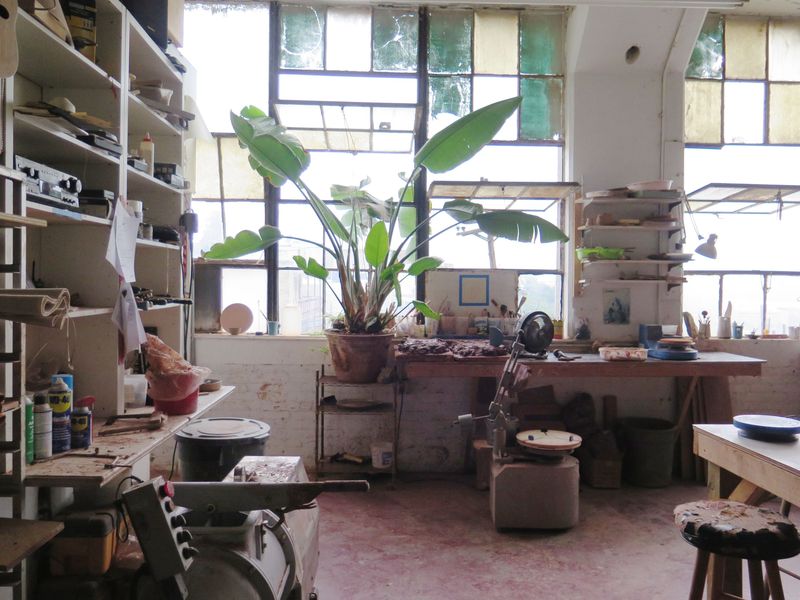
Jono's Union City, New Jersey studio.
Ever since a 2011 commission to make dinnerware for the opening of The NoMad Hotel, Jono Pandolfi has put his plates, bowls, and mugs on tables at restaurants everywhere we look: Gramercy Tavern, Eleven Madison Park, and Tosca to name a few others. With clients like Daniel Humm, Wylie Dufresne, and April Bloomfield, Jono does everything he can to make the highest quality designs in record time—all on demand. “If someone drops a stack of plates in New York, we get a call and we've got desperate restaurateurs on the line," he explains, "so we make everything pretty much to order, whether it's five dozen pieces or 5,000.”
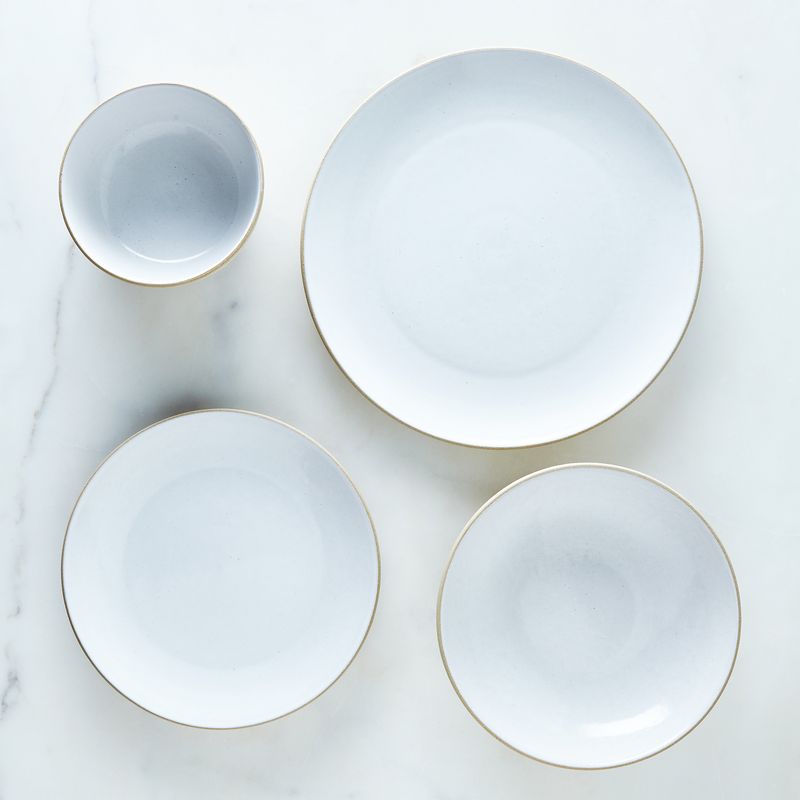
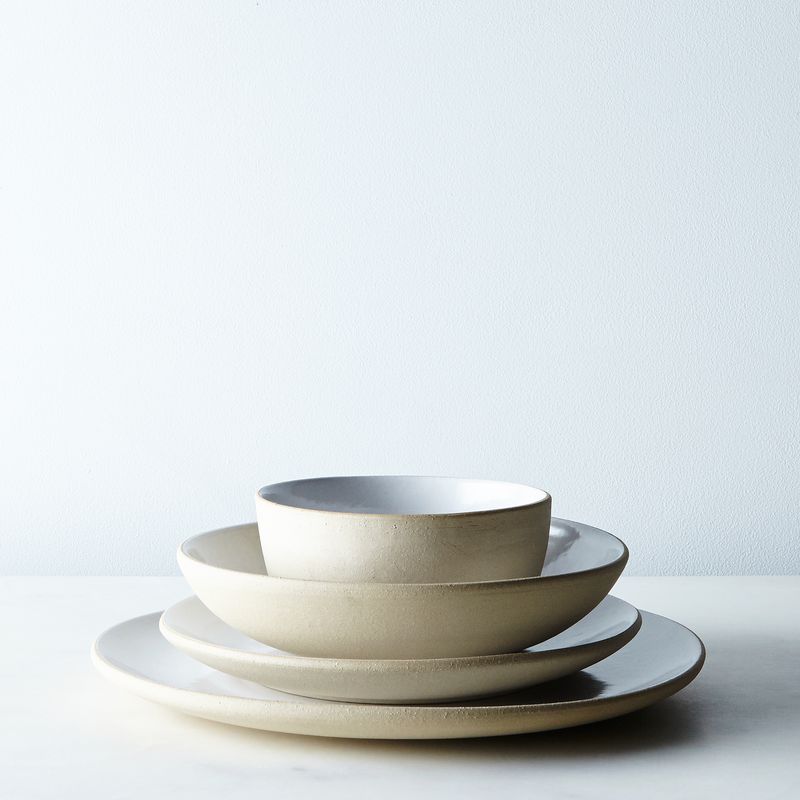
Our new 4-piece place setting by Jono Pandolfi is restaurant quality, but made for the home.
"The kind of clients I've been lucky enough to work with...are pretty uncompromising in their vision." To keep up with the demand (and stay ahead in a competitive market), Jono is always innovating. “We jigger everything face-up,” he explains, referencing how he and his five-person team create the shape of a dish while it's on the wheel. As the wheel spins, the jigger is used to carve out the face of a plate, while the underside is pressed into a mold that gives it a chosen diameter.
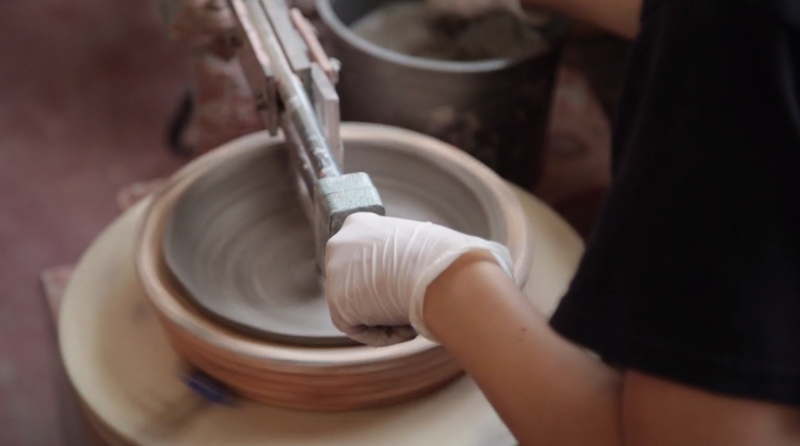
A plate being jiggered face-up: The rosy-colored mold holds the clay, while the jigger is used to shape the face.
Traditionally, jiggering is done face-down on a mold that’s shaped like the face of a plate, but Jono explains that his way actually allows for greater customization: “It allows us to really dictate how the pieces look. We can make plates smooth, textured, or spiraled, with concentric lines or even drawings." His team also designs and makes all their molds in-house because "it's faster, it costs less, and it's really about control." The plates and bowls in our new collection from Jono feature a faint spiral on top from this process, which is raised by a quick caress from the potter’s hand.

The look Jono is known for—earthen-toned, rugged clays in meticulously crafted shapes—is what all restaurants seem to be wanting and choosing these days. Our new collection has the same qualities, but in a clean, white palette that would fit into any home. “For me, this is new," he says of our collaboration, "because everything I sell is dark, speckled stoneware. Stark white dinnerware is never going away. It's chic and minimal.”
A believer in certain constraints, Jono works from just a few kinds of clay and mainly one glaze, adapted to seemingly endless variation. Even after 50-something collaborations, every one is unique. "We hadn't done our really smooth minimal coupes in the white clay body with no adornment," he says, pointing out that this collaboration is a new direction for him. Jono glazes the face of every plate, bowl, and insides of the mugs by hand (no small task on his time when their output is roughly 30,000 dishes a year). "It's kind of the most important step," he says, since it's one of the last.
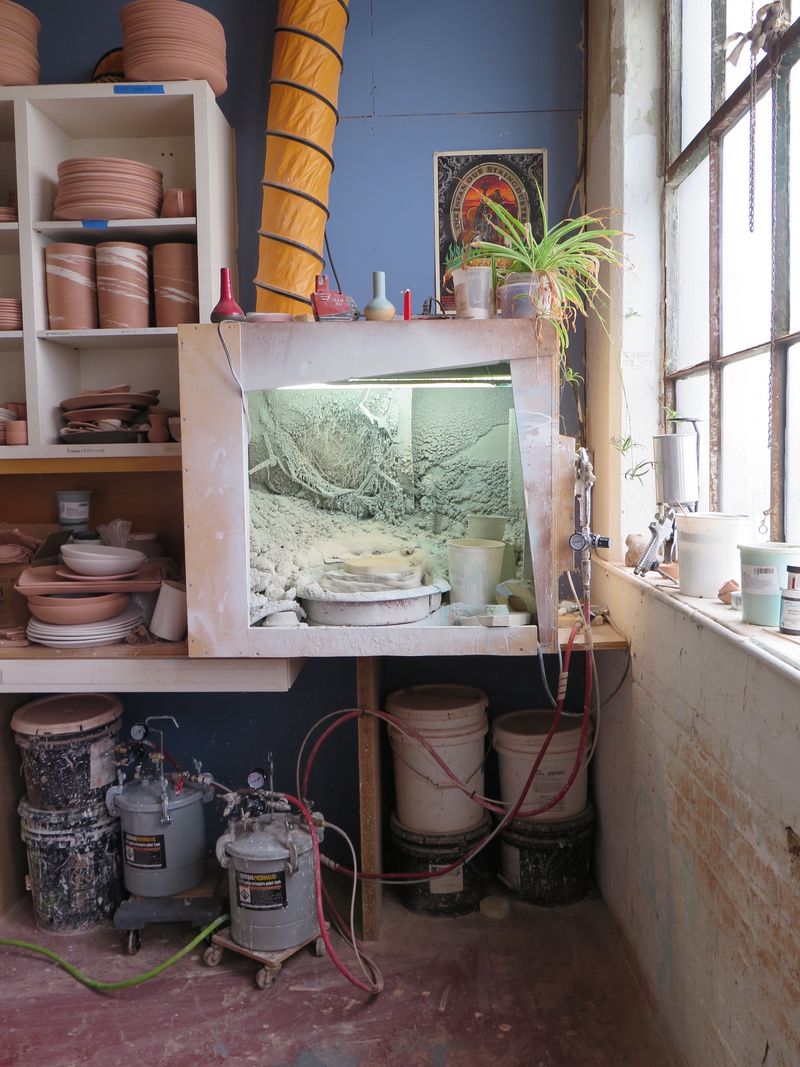

Left: this mini galactic landscape is actually where Jono spray-glazes every piece; right: tools of all shapes.
The proceeding steps are many, and the other highlights of our tour through his studio included watching the two pug mills in action—which do not involve the harming of puppies. Pug mills are used to churn wet scraps into "completely consistent, completely mixed, completely air-free clay" that’s then “pugged out” in a smooth toothpaste-like log. “This machine is truly at the heart of the operation, because everything we make pretty much starts off with the logs.” In the life of a Jono Pandolfi plate, those logs are then flattened by loud hand slapping and slab rollered into flat, even sheets. Circles are cut from those sheets, like the largest biscuits you’ve ever seen, and each round is tucked into a mold that's then locked onto the pottery wheel.
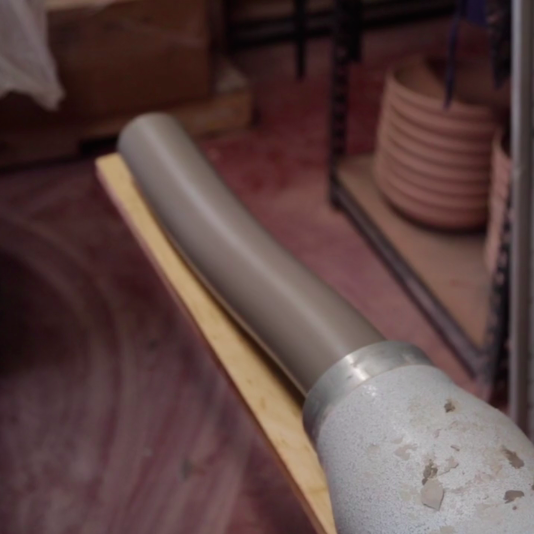
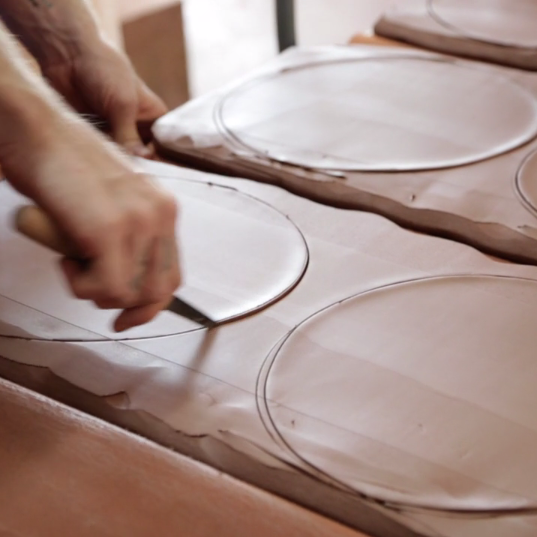
Left: a fresh log of clay from the pug mill; right: cutting out shapes from the slab.
Once jiggered into the perfect shape, the pieces dry hard before being fired twice. On his website, Jono says the process takes a full sixteen steps—but I counted more like thirty (from the making of the mold to the final firing) just to get one single finished plate. So when Jono says that “the only way to make a plate is to have every step of the process go perfectly,” it’s a wonder he can make as many good ones as he does. The imperfect "seconds" are heaped outside his studio door and sold in an Instagram-announced sale that happens once a month. Jono has so many great chefs calling that he can avoid setting wholesale prices and dealing with third-party retailers—which is why our collaboration, which makes his work available to anyone, is so exciting.
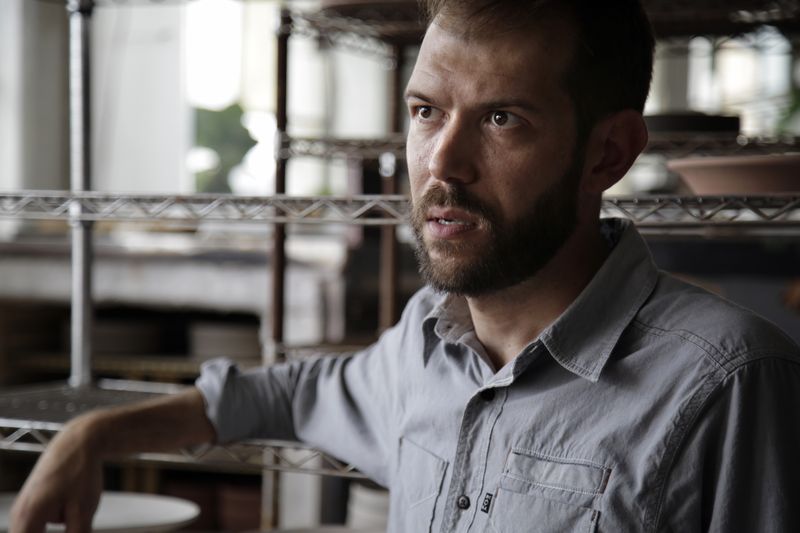
You can pick up any piece from the pile of seconds and Jono, like a A+ student taking an art history quiz, can name exactly who and what restaurant it was made for, when, and what exactly its purpose is: tiny dishes are for sauces and salts, specific to the restaurant menu they were designed to serve; dinner bowls, wide with tall sides, are as grand as plates can be. Every shape is nuaced, technical in its precision. “I love the challenge of [working with clay]—the technical challenge of it—and I love the problem solving," he says in response, "and, you know, I don’t back down.”
Are you as excited as we are? Shop our exclusive new dinnerware line by Jono, here.
Video and portrait by Kyle Orosz; table setting and coffee mug on table photos by James Ransom; product photos by Rocky Luten.
See what other Food52 readers are saying.